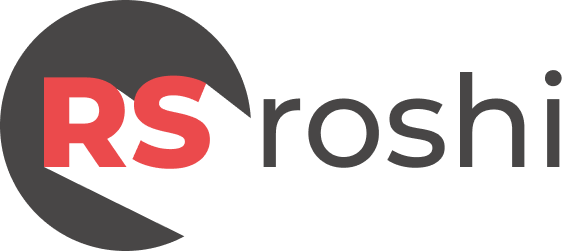In the rapidly evolving technological landscape, two innovations stand out for their transformative potential: blockchain and the Internet of Things (IoT). Separately, each technology has already begun to reshape industries and consumer experiences. Together, they form a powerful combination that addresses critical challenges of security, scalability, and trust in our increasingly connected world.
The Convergence of Two Transformative Technologies
The Internet of Things has expanded dramatically over recent years, with billions of connected devices generating and exchanging massive amounts of data. From smart home systems and wearable health monitors to industrial sensors and autonomous vehicles, IoT devices are becoming ubiquitous in both consumer and enterprise environments.
However, this explosive growth brings significant challenges:
- Security vulnerabilities in interconnected systems
- Data privacy concerns as devices collect sensitive information
- Centralized control points creating single points of failure
- Trust issues between devices from different manufacturers
- Scalability limitations as networks expand
Blockchain technology, with its decentralized architecture and cryptographic security, offers solutions to many of these challenges. Originally designed as the foundation for cryptocurrencies like Bitcoin, blockchain has evolved into a versatile technology applicable across numerous domains.
How Blockchain Enhances IoT Systems
Enhanced Security and Trust
Traditional IoT systems often rely on centralized cloud servers, creating vulnerable targets for cyberattacks. Blockchain distributes data across a network of nodes, eliminating single points of failure and making systems more resilient against attacks.
“Blockchain’s immutable ledger provides a secure foundation for IoT transactions,” explains Dr. Sarah Chen, Director of Emerging Technologies at MIT’s Digital Innovation Lab. “Once data is recorded on the blockchain, it cannot be altered retrospectively, which dramatically improves the integrity of IoT systems.”
This immutability also establishes trust between devices that may not inherently trust each other, enabling secure machine-to-machine transactions without human intervention or trusted third parties.
Decentralized Architecture
Centralized IoT architectures face significant scalability challenges as the number of connected devices grows exponentially. Blockchain’s decentralized nature distributes processing and storage requirements across the network, potentially alleviating bottlenecks in traditional systems.
Smart contracts—self-executing contracts with the terms directly written into code—enable autonomous device interactions governed by predefined rules. This capability reduces the need for intermediaries and allows for truly autonomous IoT ecosystems.
Real-World Applications Emerging
Several industries are already leveraging the blockchain-IoT combination:
Supply Chain Management
Blockchain-enabled IoT systems provide unprecedented transparency and traceability throughout supply chains. IoT devices like RFID tags and environmental sensors collect data at each stage, while blockchain provides an immutable record of a product’s journey from manufacturer to consumer.
Walmart and IBM’s Food Trust initiative demonstrates this concept, using blockchain to track food products through the supply chain. The system enables rapid identification of contamination sources during outbreaks and verifies labels like “organic” or “locally sourced.”
Energy Management
In the energy sector, blockchain and IoT enable peer-to-peer energy trading in microgrids. Smart meters (IoT devices) measure energy production and consumption, while blockchain records transactions between prosumers (those who both produce and consume energy).
Brooklyn Microgrid in New York exemplifies this application, allowing residents with solar panels to sell excess energy directly to neighbors through blockchain-based smart contracts, bypassing traditional utility companies.
Healthcare Systems
Healthcare organizations are exploring blockchain-IoT integration to enhance patient care and data management. IoT devices collect patient data continuously, which is then securely stored on blockchain, providing complete, tamper-proof medical histories.
Additionally, pharmaceutical supply chains benefit from this combination, with temperature sensors monitoring medication storage conditions throughout distribution, and blockchain verifying authenticity to combat counterfeit drugs.
Challenges to Widespread Implementation
Despite promising applications, several challenges must be addressed:
Technical Limitations
Many IoT devices have limited computational power and battery life, making traditional blockchains impractical. Researchers are developing lightweight blockchain protocols specifically designed for resource-constrained devices.
Scalability remains another concern, as most blockchain networks currently process far fewer transactions per second than would be required for massive IoT implementations. Solutions like sharding, sidechains, and layer-two protocols are being explored to address this limitation.
Standardization Gaps
The lack of standardization across both IoT and blockchain technologies complicates integration efforts. Industry consortiums like the Industrial Internet Consortium and the Trusted IoT Alliance are working to develop common standards, but widespread agreement remains elusive.
Regulatory Uncertainty
The regulatory landscape surrounding blockchain technology continues to evolve. Data protection laws like GDPR create compliance challenges for blockchain systems due to their immutable nature, which may conflict with “right to be forgotten” provisions.
The Path Forward
As these challenges are gradually addressed, we can expect accelerated adoption of blockchain-IoT systems across industries. Gartner predicts that by 2026, 30% of enterprise IoT deployments will incorporate blockchain technology in some form, up from less than 5% today.
Future developments will likely include:
- Edge computing integration, allowing blockchain processing to occur closer to IoT devices
- AI-enhanced systems that combine machine learning with blockchain-IoT infrastructure
- Cross-chain interoperability enabling different blockchain networks to communicate seamlessly
- Zero-knowledge proofs and other privacy-preserving technologies addressing data protection concerns
Conclusion
The convergence of blockchain and Internet of Things represents a significant step toward more secure, transparent, and autonomous systems. While challenges remain, the potential benefits—enhanced security, increased efficiency, new business models, and improved trust—are driving continued innovation and investment.
As these technologies mature and integration challenges are overcome, we can expect blockchain and IoT to fundamentally transform how devices interact, how data is managed, and how value is exchanged in our increasingly connected world.
The combination doesn’t just represent an incremental improvement to existing systems—it enables entirely new possibilities that were previously impractical or impossible, pointing toward a future where secure, autonomous machine-to-machine economies become a reality.





